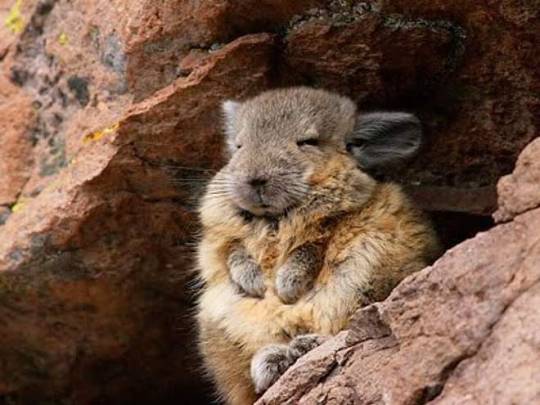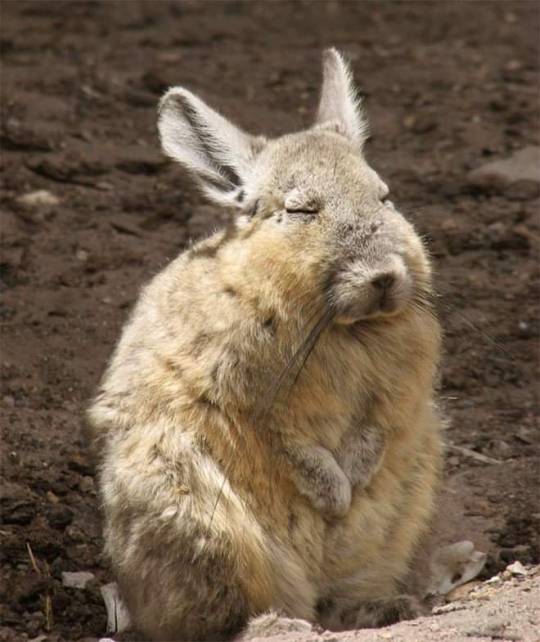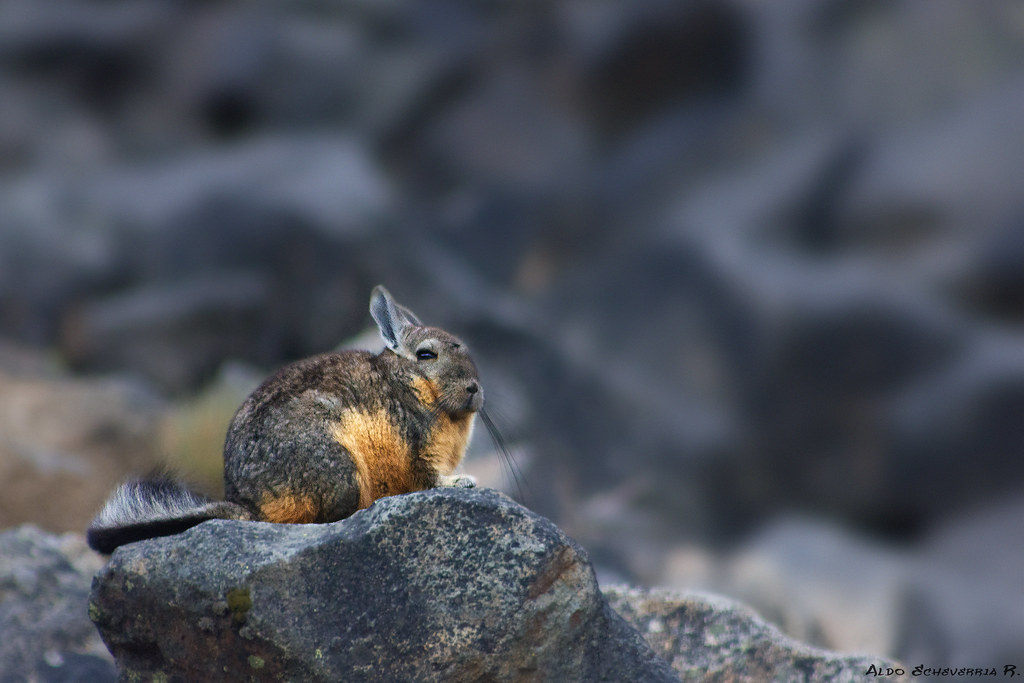#lagidium
Photo
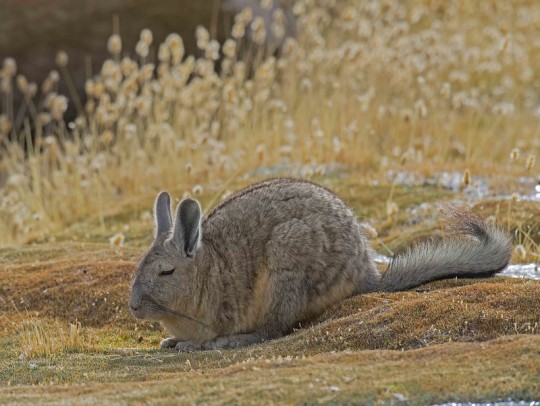
Southern Viscacha (Lagidium viscacia)
by Oscar Fuentes
#southern viscacha#viscacha#rodents#Lagidium viscacia#lagidium#Chinchillidae#rodentia#mammalia#chordata#wildlife: peru#wildlife: south america
105 notes
·
View notes
Text
FAQ
Q: What do you do here?
A: I identify unusual mammals seen in Tumblr posts.
Q: Why?
A: For fun!
Q: Why only mammals?
A: I’m more confident in my ability to identify mammals over other kinds of animals!
Q: Are you a biologist?
A: No. I went to vet school for three years, but eventually chose a different career path because I was born with some visuospatial and fine motor issues. I’m an illustrator and motion designer!
Q: Do you work with animals otherwise?
A: Yes! My family owns an animal shelter and we rescue and care for abandoned cats and dogs.
Q: Can I tag you on posts if you haven’t gotten around to identifying a certain animal on it yet?
A: Go ahead!
Q: Can I submit pictures of mammals I find around the net to you so you’ll identify them too?
A: Feel free to!
Q: How confident are you in your identifications?
A: Depends on the animal, but usually around 85 to 90%.
Q: How did you gain this ability?
A: I used to read animal encyclopedias and Wikipedia pages about animals for hours when I was a kid.
Q: What’s your main blog?
A: @crtter
Q: What’s the animal in your icon?
A: Southern viscacha (Lagidium viscacia).
Q: What’s your favorite mammal?
A: White-eared opossums (Didelphis albiventris)!
74 notes
·
View notes
Photo
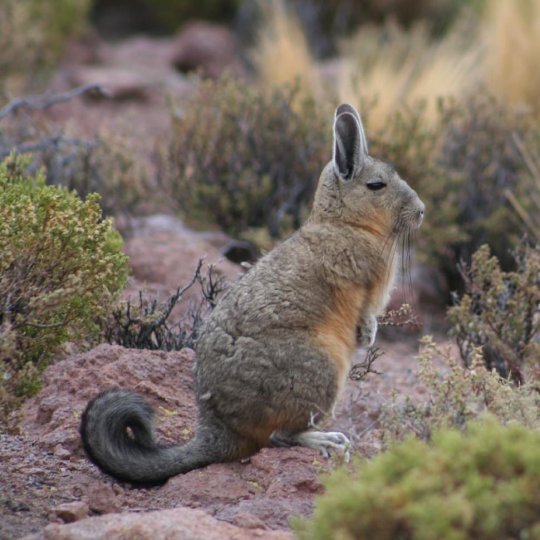
Squirrel or rabbit? Neither! It’s the southern viscacha (Lagidium viscacia). This rodent lives in South America and is a skilled climber that inhabits mountainous areas. A gregarious critter, the viscacha lives in colonies, which consist of multiple family units that can be as large as 75 individuals. During the day, it bathes in the Sun and forages for vegetation such as grasses, mosses, and lichens. Photo: Cody Hinchliff, CC BY-NC-SA 2.0, flickr #AnimalFacts #SouthernViscacha #dyk #nature #NaturalHistory #animals #FunFacts #SouthAmerica https://www.instagram.com/p/CdW3qrrrFYN/?igshid=NGJjMDIxMWI=
819 notes
·
View notes
Text

Grzimek's Animal Life Encyclopedia, vol. 11, Mammals II. 1972. Illustrated by Peter Barrett.
1.) Plains viscacha (Lagostomus maximus)
2.) Southern viscacha (Lagidium viscacia)
3.) Long-tailed chinchilla (Chinchilla lanigera)
4.) Prehensile-tailed hutia (Mysateles prehensilis)
5.) Hispaniolan hutia (Plagiodontia aedium)
6.) Jamaican coney (Geocapromys brownii)
7.) Nutria (Myocastor coypus)
#rodents#plains viscacha#southern viscacha#long-tailed chinchillas#prehensile-tailed hutias#hispaniolan hutias#jamaican coneys#nutria#Peter Barrett
134 notes
·
View notes
Text
Round 1.1
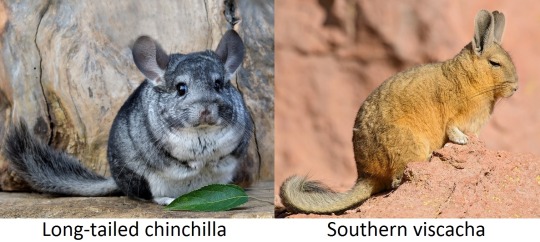
Information about contestants below!
Long-tailed chinchilla (Chinchilla lanigera)
Chinchillas have the densest fur of all mammals that live on land. Their bodies are covered in 20,000 hairs, with up to 75 hairs growing from each follicle. The general color of their upper parts is bluish or silvery gray; the underparts are yellowish-white. The tail has long, coarse, gray and black hairs.
Chinchillas live in burrows or rock crevices at elevations of about 3,000 to 5,000 m. They live in groups that can range from 14 members up to 100. Typically monogamous. Chinchillas are agile jumpers and can jump up to 1.8 m. They eat plant leaves, fruits, seeds, and small insects.
Domestic chinchillas are kept as pets and are also used in research. They are listed as Endangered due to a severe population loss. In the wild, the average life-span is 10 years; however, they could live up to 20 years in human care.
Southern viscacha (Lagidium viscacia)
The southern viscacha has yellowish-grey upperparts and paler underparts. It has long ears and hind legs and resembles a rabbit in appearance apart from its long, bushy tail. The body fur is long and soft, while that on the tail is coarse.
It is a colonial animal living in small groups in rocky mountain areas, where the vegetation is sparse. Its elevation range is about 700 to 5,100 m above sea level. Viscacha does not hibernate and is mostly active soon after dawn and again in the evening. It eats mostly grasses, moss and lichens.
Part of the day is spent perched on a rock sunbathing, grooming, or resting. They do not venture far from rocks so that they can plunge underground if danger threatens. They use various calls to communicate with each other. The average lifespan is unknown, but one individual survived for 19 years in captivity.
30 notes
·
View notes
Note
What species are your OCs? Use scientific names please.
Eunkyu and Eunyeong: Sciurus vulgaris (Red Squirrel)
Siwoo - Erinaceinae (Hedgehog)
"Haoyu" - A cat (I forgot to think about a species for them :\)
Aera - Sciurus carolinensis (Grey Squirrel)
Hyeonsik - Funambulus (Indian Palm Squirrel)
Chunhee - Lagidium peruanum (Northern Viscacha)
Raon - Tamias (Chipmunk)
4 notes
·
View notes
Text
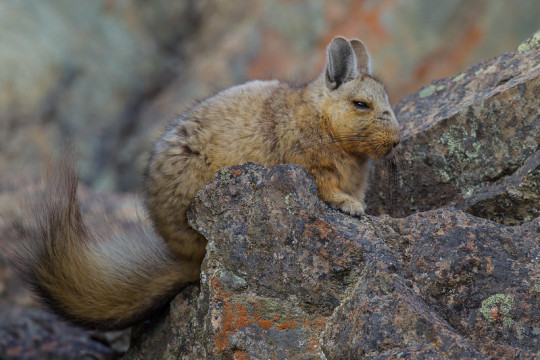
Wolffsohn's viscacha (Lagidium wolffsohni)
Patagonia National Park, Chile
Photo © Paul Jones
37 notes
·
View notes
Text

Знакомьтесь, это очаровательное вечно уставшее создание - горная вискаша (Lagidium viscacia). Несмотря на свой внешний вид и массу в 1,5 кг, это животное развивает скорость до 40 км/ч и прыгает до 3 м в длину! К слову, полузакрытые толстыми веками глаза защищают зверька от сильнейших ветров и яркого солнечного света, коих в горах Южной Америки хватает.
Meet this adorable, eternally tired creature - the mountain viscacha (Lagidium viscacia). Despite its appearance and weight of 1.5 kg, this animal speeds up to 40 km/h and jumps up to 3 m in length! By the way, its eyes, half-closed by thick eyelids, protect the animal from the strongest winds and bright sunlight, which are plentiful in the mountains of South America.
0 notes
Photo



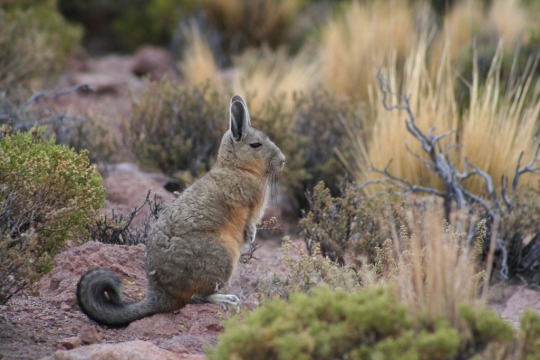
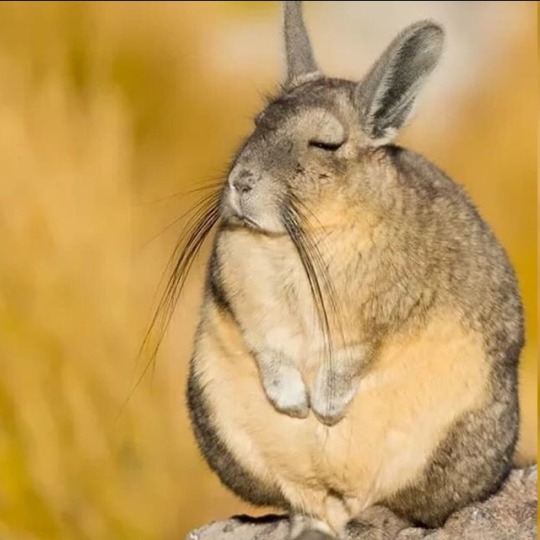

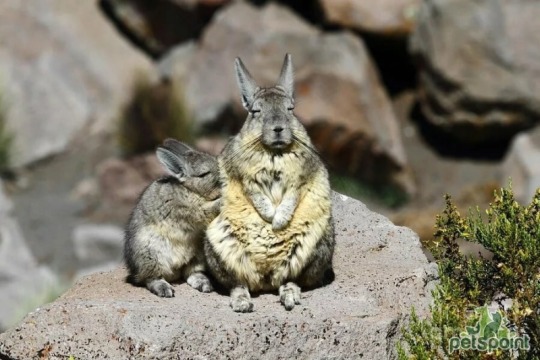
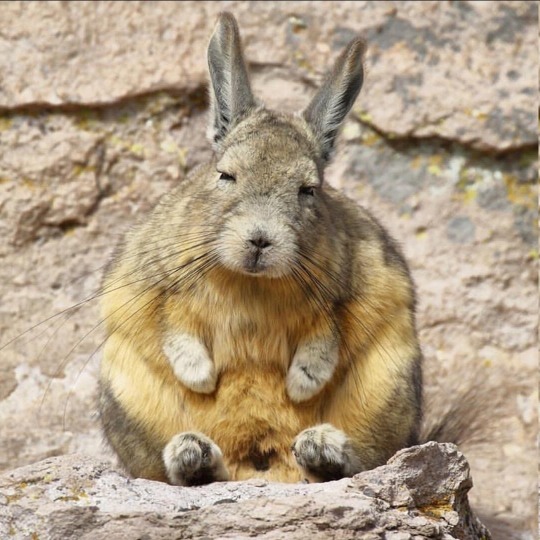
#animals#rodents#viscacha#cute animals#mountain animals#cute#lagidium#lagostomus#chinchillidae#south america
122 notes
·
View notes
Video
Southern Vizcacha (Lagidium viscacia) by Aldo Echeverria
Via Flickr:
Spotted at Miguillas Valley, Inquisivi Province. La Paz, Bolivia
#Vizcacha#Lagidium#viscacia#Lagidium viscacia#Rodentia#Chinchillidae#Mammals of Bolivia#Nature#Wildlife#La Paz#Bolivia#Miguillas Valley
17 notes
·
View notes
Photo

Meet Madeline "The Magneficent" Presto
Madeline or Maddie for short she was created to sell "magic tricks for children and adults.
Sadly for Maddie... The Magic Shop that she used to work was closed due to taxes issues in 1939...
Without work or money. She decided to move to Toons Town to find work and place to live.
Considering that Madeline was at least 14 years old. A social worker put Madeline in Foster Home in hopes that someone can take care of her.
Luckily for Madeline: A lovely couple of jackrabbits: Harry Hardeen and Hanna Hardeen adopts Maddie and she moves with them. She changes her last name. And she lived happily ever after, Right?
Is not ending of the story
Jus two years passed and Maddie got 11 newest siblings
And Madeline being the oldest one its means she needs a temporal job. After searching and searching she couldn’t find one
Until now......
She still learning few magic tricks
She is very sweet girl and can see good heart on everyone even this supposed villains or ink demons
Also shipper
Madeline is Lagidium aka Long tail Rabbit. She gets annoyed when some people confused her for squirrel
Madeline Hardeen belongs to me
#toon town au#toon oc#bendy oc#rabbit oc#batim oc#lagidium#magician#rabbit#magic#toon town oc#madeline hardeen#madeline the magician
8 notes
·
View notes
Text


doodles from online class yesterday, first is a sanrio sona because I love keroppi (ft my among us character) and the second is something for bi visibility day which was yesterday!
#my sona is now a lagidium! they’re long tailed rabbits from chile that resemble pikachu!#sanrio#among us#chaos.ocs#chaos.art
21 notes
·
View notes
Note
Yo, I'm having a dumb moment, What animal?
Lagidium!

17 notes
·
View notes
Photo

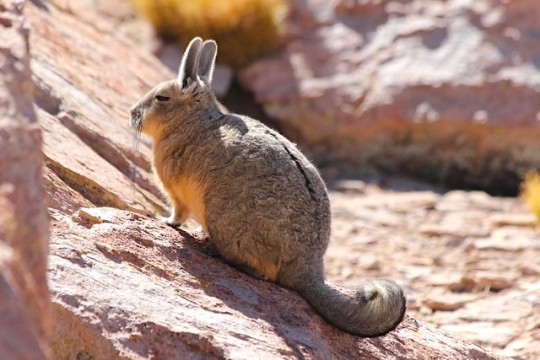
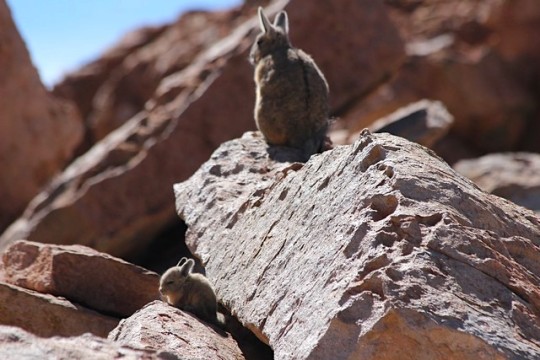

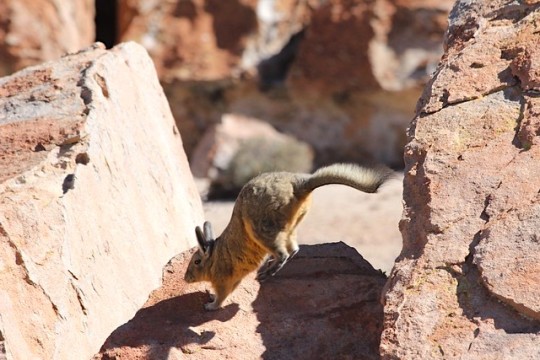
Lagidium viscacia
Southern viscacha
5 notes
·
View notes
Photo

What Is a Viscacha?
If you don't know what a viscacha is, you definitely can't tell from its unusual name. So what is this mythical beast, and where might you find one?
What is a viscacha? A viscacha (or 'vizcacha') is an animal that is closely related to the chinchilla. It looks like a short-tailed chinchilla crossed with a hare, although it isn't in the same family as rabbits or hares. It has long front teeth, very long whiskers, long rounded ears, a long curly tail, thick fur and a stout body. There are several species: some live in the Andes Mountains while others live in the Argentinian 'Pampas' (plains). They are prey animals and herbivores, so mostly eat wild grasses.
Viscachas are perhaps best known for tourists easily mistaking them for chinchillas! There are even some online chinchilla guides that mistakenly use pictures of viscachas—but they're different species entirely. The guide below first details what a viscacha is and what one looks like, before looking at the different species of viscacha and whether you can get one as a pet.
What Is a Viscacha?
The viscacha (also spelled vizcacha) is a South American rodent that's closely related to the long-tailed and short-tailed chinchillas. It's so closely related that it's in the same family (Chinchillidae). There are two genuses (or 'genera') of viscacha. These are Lagidium and Lagostomus.
What Does a Viscacha Look Like?
The answer depends on which kind of viscacha you mean. But the most common kinds, i.e. the various species of mountain viscacha, look like a cross between a hare and a chinchilla. They are bigger than chinchillas, and have strong hind legs, which means they're good at jumping. They have shorter front legs/paws that they use to hold food or run on all fours.
Viscachas have distinctive fur which is brown on top and a lighter shade on the bottom; this is perhaps the easiest way to tell them apart from 'regular' chinchillas. Viscachas also have:
Thick fur like chinchillas do, to keep warm high up in the mountains
Four large front teeth (incisors)
Long ears that look more like those of a hare or a rabbit than a mouse, like a chinchilla's
A fluffy, curly tail like a squirrel
Another central difference is that viscachas are much heavier than chinchillas. They can weigh up to 6.6lbs/3kgs.
Despite looking so much like rabbits, they aren't closely related. Instead, the viscacha is very closely related to the chinchilla, hence its inclusion in the same family. It's also closely related to the chinchilla rat.
Where Does The Viscacha Live?
The viscacha's natural habitat is in South America. It lives in the same places that chinchillas do.
More specifically, it's from the Andes. The Andes are tall mountains that dominate the west coast of South America. They run all the way from the southern tip of the continent in Argentina, all the way to the north in Colombia, where South America meets Central America. And on top of being the longest mountain range in the world, they're tall, too.
Most viscacha species live high up in the Andes mountains, at elevations of 13000ft and higher. The viscacha has adapted well to this habitat: it has thick fur to keep warm, long legs to leap from one rock to another, and large ears to hear predators coming from far away. There are other viscacha species that don't live in the mountains. The plains viscacha lives in the plains of Argentina. This species has consequently evolved to look quite different to its mountain cousins.
All viscachas live in burrows, but mountain viscachas don't dig these burrows for themselves. That's because their paws are fleshy and small, more like hands with fingernails than paws with claws. Rather than dig their own burrows, they use abandoned ones that other animals have made, or natural crevices formed in the rocks. That's what chinchillas do, too.
Plains viscachas dig their own elaborate burrow complexes, though. Locals call these viscacheras.
What Do Viscachas Eat?
Viscachas are herbivores. They eat wild grasses, of which there are many species where they live.
To supplement this diet, viscachas likely eat nuts, seeds and roots too. Roots are particularly useful as they store water, which can be in short supply in the dry season. Nuts and seeds provide much-needed fat and protein, of which there's less in grasses. It's possible that they may also eat insects when the opportunity arises, again to supplement the diet, although this isn't clear.
The reason we don't know much about the diet of the viscacha (or the chinchilla, for that matter) is that they're secretive animals so aren't easily studied.
How Do Viscachas Reproduce?
This is another way that viscachas are similar to chinchillas. Rodents are famed for having lots of litters with lots of babies/kits/young in each one. House mice, for example, only gestate their young (are only pregnant) for twenty days, and when they give birth, they give birth to six young on average each time. Pairs can manage 200 young in a year.
Viscachas, though, have a three month gestation period. That's not unlike the long and short-tailed chinchillas, which have a 110 day gestation period. And when the viscacha has a litter, it's typically a litter of only one. This means that viscachas have 'only' two or three young a year.
What Species of Viscacha Are There?
Unlike the chinchilla, there are more than two species of viscacha. Most of these live in the Andes, while one lives in the plains of Argentina. Each species looks slightly different, for example its tail being longer or shorter, its body being thinner or stouter, or its diet not being the same.
Mountain Viscacha vs. Plains Viscacha
Like the chinchilla, there are several species of viscacha.
The plains viscacha (Lagostomus maximus) is from Argentina. Like the chinchilla, it lives in large colonies, and is very communicative. Individuals can make alarm calls to warn the rest of the group of approaching predators. As the name suggests, it lives in the plains ('pampas') of Argentina, unlike the rest of the viscacha and chinchilla species.
The northern viscacha (Lagidium peruanum) is from the Peruvian Andes. This species lives in groups too, but smaller groups almost like families that make up larger communities.
The southern viscacha (Lagidium viscacia), also known as the mountain viscacha, is similar to the northern viscacha, but its fur is more red in color. It too lives in the Andes, only further south than the northern viscacha.
Lagidium ahuacaense is a recently-discovered species. It loves in the mountains of Ecuador, and was only first discovered by modern science in 2005. Because it lives hundreds of miles away from the nearest extant viscacha population centers, it's thought that only a dozen or so remain in the wild.
Wolffsohn's viscacha (Lagidium wolffsohni) is a rare species from Argentina and Chile. It lives in the mountains, but not much else is known about it.
As they live in such remote places, it's still possible that there are undiscovered viscacha species in the Andes. Given that the last species was only discovered in 2005, that's not a remote possibility.
Plains Viscacha (Lagostumus Maximus)
The plains viscacha is the most distinctive of all the viscachas. It is a slightly different shape, but most obviously has completely different markings. It has alternating light and dark stripes running horizontally across its face. It looks almost like a raccoon or a badger. In its overall shape, it's like a mountain viscacha, hare-like; but its head is almost shaped like a guinea pig's (albeit bigger).
This species lives in a special kind of plain in Argentina. This plain is called the Pampas, coming from the native Quechua word 'pampa', meaning 'plain'. It's an area of lowlands that covers almost 500,000 square miles, and includes the most populous area of Argentina, plus all of Uruguay and part of southern Brazil.
Unlike the Andes, the Pampas is a temperate region, which is partly why the vizcachas here don't look like the ones from the mountains. Winters here are mild, with the temperature not normally dipping below freezing unless there's a cold snap; and summers are hot, much hotter than viscachas and chinchillas are normally used to. If you put a regular chinchilla here in the summer, it would overheat in minutes!
Is a Viscacha a Kind Of Chinchilla?
This is an interesting point. When people talk about 'chinchillas', they don't mean viscachas. These animals aren't well known outside of their native range in South America. But strictly speaking, viscachas are a kind of chinchilla. That's because they're a part of the Chinchillidae family. They were placed there because they share a recent common ancestor with chinchillas, which is why they share many of the same features.
How Are Chinchillas and Viscachas Related?
The great thing about this question is that nobody knows the precise answer.
Despite chinchillas being such a popular subject of scientific study (and a popular pet to boot), fossil ancestors of any chinchilla species have yet to be found. That applies to short tails, long tails and all mountain viscacha species. As such, it's assumed that they have a common ancestor because a) they're so similar and b) they live in the same place; but as for precisely when they diverged into separate species, and which species they both came from, isn't known.
The plains viscacha on the other hand does have relatives in the fossil record. Fossils from the Early Miocene Epoch, which was between 23.8 and 20.5 million years ago, have been found in South America. The genus that the plains viscacha is a part of (Lagostominae) contains two other genera which are now extinct: Pliolagostomus and Prolagostomus. There are many species in each of these genera, many of which lived further west towards the Andes than today's plains viscacha. Little is known about them.
Can You Get a Pet Viscacha?
Viscachas aren't currently kept as pets. They're larger than chinchillas, and haven't been successfully domesticated. If they were, they would have similar needs to pet chinchillas: they would likely thrive on hay, and would need temperature- and humidity-controlled cages with lots of room to move and jump. Like chinchillas, they would also do best in pairs.
If anything, viscachas are seen as pests. That's because they can strip the ground bare of vegetation quicker than any farm animal, and as there are lots of cattle and similar farm animals raised in South America, that's a big problem. Many farmers shoot them on sight like other farmers shoot rabbits.
Below, you can find our chinchilla quiz, new posts for further reading, and a signup for our Chinchilla Newsletter!
#chinchillas #chinchillafaqs
1 note
·
View note

